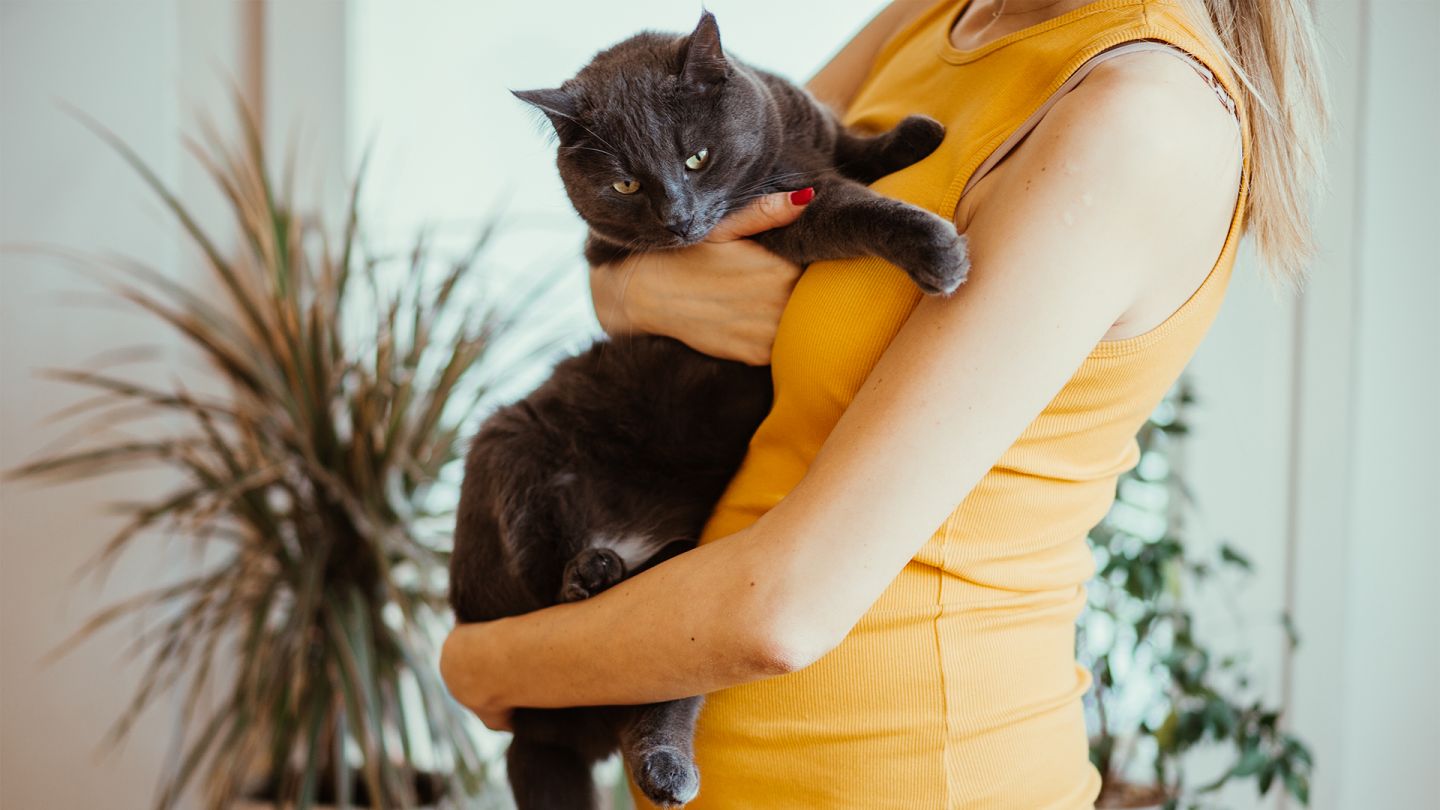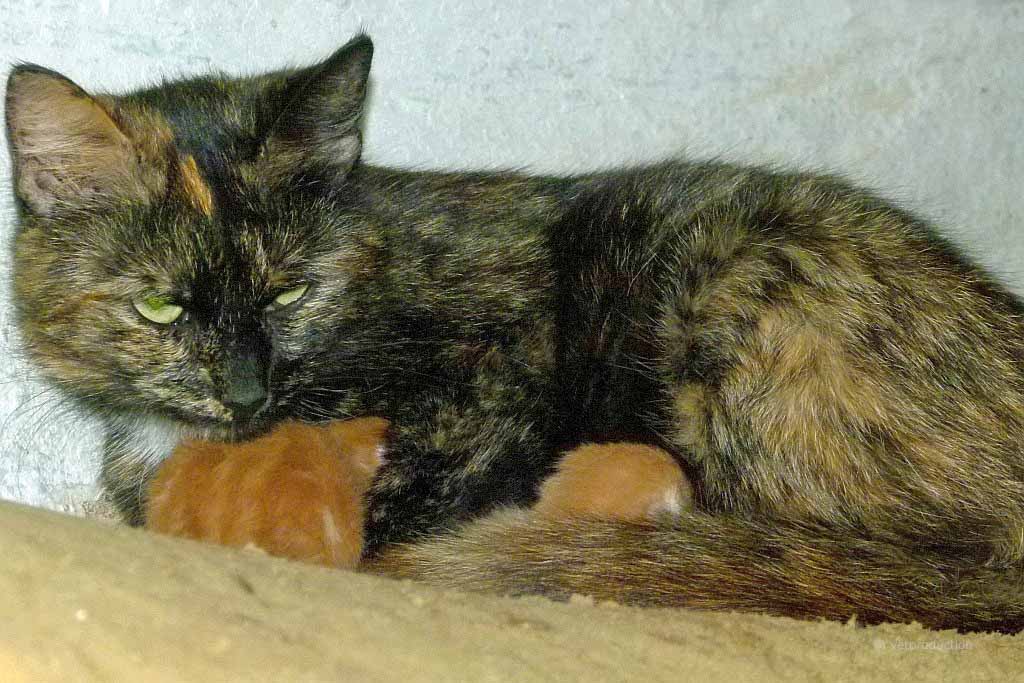
Toxoplasmose (rr 3.32 [p.007]) war bei kongenitaler okulärer. Die ausscheidung der oozysten kann man mit antiparasitika, wie toltrazuril (baycox), stark reduzieren.

Toxoplasmose Ursache Vorbeugung Behandlung – Gesundbundde
Chinchilla, meerschweinchen und hamster sind besonders empfindlich (.

Clindamycin katze toxoplasmose. 4 wochen bei beteiligung des zns clindamycin + trimethoprim/sulfonamide: In feuchter erde, einige monate überleben. Wenn ihre katze leidet an klinischen toxoplasmose, können sie in der regel ein rezept von ihrem tierarzt für clindamycin.
Danach wurde verdacht auf ein intestinales lymphom gestellt und ein rezidiv der toxoplasmose diagnostiziert. Direkt nach dem kotabsatz der katze sind die parasiteneier nicht gleich infektiös. Die dosierung, die der tierarzt vorschreibt, kann von fünfundzwanzig bis fünfzig milligramm pro kilogramm der katze variieren, und dies wird höchstwahrscheinlich auf zwei dosen pro tag aufgeteilt.
Bei der katze spielt nur toxoplasma gondii eine rolle. Im darm kommt es zum ausbilden von eiern, die neue toxoplasmen enthalten, und mit dem kot ausgeschieden werden. Die vollständige auflistung der sonstigen bestandteile finden sie unter abschnitt 6.1.
Bei der toxoplasmose handelt es sich um eine infektion, die durch den erreger toxoplasma gondii hervorgerufen wird. Toxoplasmose und neosporose (thog) toxoplasma gondii und neospora caninum sind protozoen (einzeller), die nach einer infektion neurologische symptome auslösen können. Eine therapie ist dann nicht notwendig.
Clindamycin ist ein antibiotikum, das wirksam gegen toxoplasmose und andere infektionen ist. Bereitet die toxoplasmose der katze keine beschwerden, ist in der regel keine behandlung durch den tierarzt nötig. Katzen mit uveitis sollten mit clindamycin (in der oben angeführten dosierung) und
Giardiose, tritrichomonose, isosporose, cryptospordiose, toxoplasmose, neosporose, hammondiose sowie sarcocystiose. Katzen und hunde mit einer akuten infektion (systemische toxoplasmose): Leider sehen wir noch keine allzu große besserung.
Clindamycin 4x 300 mg/d gastrointestinale störungen blutbildveränderungen Die vier garstufen von rindfleisch: Aber wir geben nicht auf.
Um gegen die toxoplasmen im darm vorzugehen, setzt der tierarzt sulfonamide oder clindamycin ein. Eine toxoplasmose ist für katzen in der regel nicht gefährlich, denn die krankheit verläuft meist ohne beschwerden; 3 zur bekämpfung von ektoparasiten (flöhe, zecken, läuse, haarlinge,
Rovamycine®) wird zur behandlung schwangerer verwendet, ist aber in der schweiz nicht mehr im handel. Beim hund ist die erkrankung mit neospora caninum häufiger, aber infektionen mit toxoplasma gondii kommen ebenfalls vor. Erkrankt die katze an toxoplasmose, scheidet sie mit ihrem kot die erreger aus, die erst nach 24 stunden ansteckend werden.
Clindaseptin 25 mg/ml lösung zum eingeben für katzen und hunde. Wie lässt sich eine toxoplasmose behandeln? 12,5 mg/kg sulfadiazin und 2,5 mg/kg trimethoprim 2 × tgl.
Die behandlung mit clindamycinhydrochlorid kommt ebenso bei akuter ganzkörperbeteiligter toxoplasmose von katzen zur anwendung. Infizierte katzen ausgeschieden werden oder durch ungenügend gekochtes und rohes fleisch erworben. Als endwirt fungieren katzen, als zwischenwirt menschen ebenso wie vieh und mäuse.
Bei täglicher reinigung der katzentoilette besteht auf diesem weg kaum infektionsgefahr! Eine behandlung der toxoplasmose erfordert hohe dosen an clindamycin (greene 1992a). Achten sie darauf, dass ihre katze einen rückzugsort hat.
Treten dagegen symptome auf, kann der arzt die toxoplasmose mit antibiotika wie clindamycin behandeln. Dieser ist aufgrund seiner grossen resistenz gegenüber unwirtlichen umweltbedingungen buchstäblich weltweit aktiv. Clindamycin 25 mg (als clindamycinhydrochlorid 27,15 mg) sonstige bestandteile:
Wenn ihre katze an klinischer toxoplasmose leidet, können sie normalerweise von ihrem tierarzt ein rezept für clindamycin erhalten. Die pathogenese der toxoplasmose bei katzen ist. Verdacht ist jetzt eine toxoplasmose.
Während die meisten katzen zeigen keine symptome der infektion, können diejenigen mit einem geschwächten immunsystem toxoplasmose entwickeln , erleben fieber, verlust von energie und appetit oder lungenentzündung. Und katzen) befasst sich mit folgenden erkrankungen: Alle genannten arzneimittel haben sich zur eingrenzung der ausscheidung von oozysten bewährt.
1 zur bekämpfung von würmern (helminthen), • nr. Wie kann eine toxoplasmose bei der katze behandelt werden? Versuch einer therapie mit clindamycin:
Treten symptome auf, wird die toxoplasmose vor allem mit antibiotika (z.b. Die katze wurde mit clindamycin und prednisolon therapiert und 4 wochen später euthanasiert. Dieser sollte dem vierbeiner die möglichkeit geben, sich aufzuwärmen und zu erholen.

